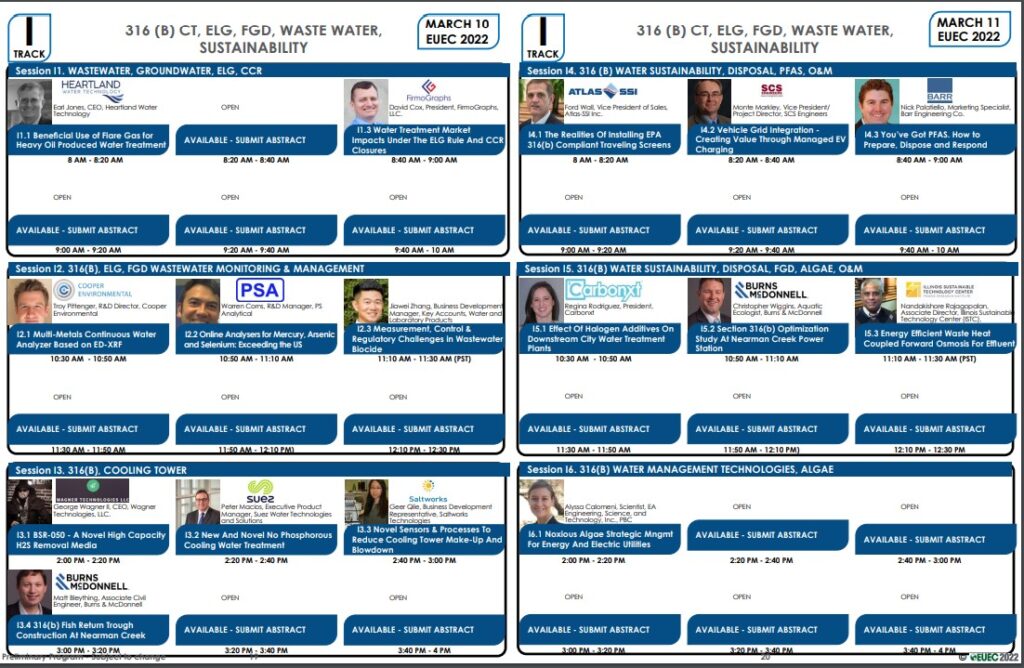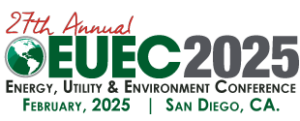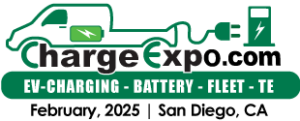EUEC 2022 PRELIMINARY PROGRAM
TRACK I: Water, 316(b) & Cooling Tower
ACCEPTING ABSTRACTS ON: Waste Water, Ground Water, ELG, CCR, 316(b), ELG, FGD Wastewater Monitoring, Cooling Tower, Water Sustainability, Disposal, PFAS, O&M, FGD, Algae, O&M, Water Management Technologies.
BACKUP EUEC 2022 VIRTUAL Speakers have the option to present & attend remotely using EUEC Virtual.
OPEN SLOTS AVAILABLE TO SUBMIT ABSTRACTS TO SPEAK & MAKE 20-MINUTE PPT PRESENTATION

Session 1 (8 AM – 10 PM) NETWORK IN EXHIBIT AREA
Session 2 (10:30 AM – 12:30 PM) LUNCH (12:30 PM to 2 PM )
Session 3 (2 PM – 4 PM) RECEPTION (4 PM – 6 PM)
Session 4 (8 AM – 10 PM) NETWORK IN EXHIBIT AREA
Session 5 (10:30 AM – 12:30 PM) LUNCH (12:30 PM to 2 PM )
Session 6 (2 PM – 4 PM) RECEPTION (4 PM – 6 PM)

